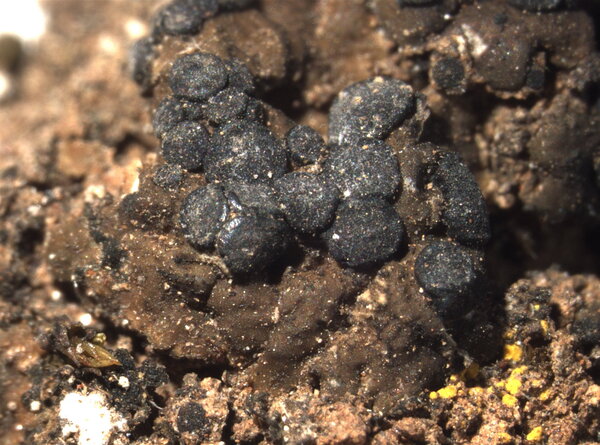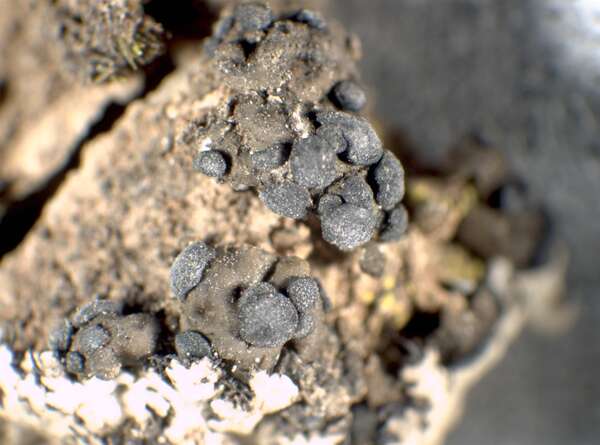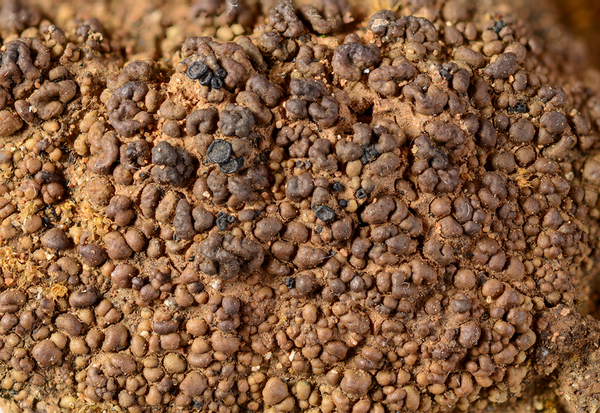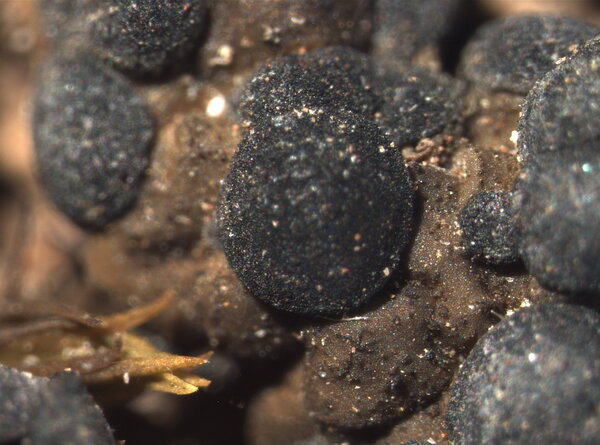Bibbya ruginosa (Tuck.) Kistenich, Timdal, Bendiksby & S.Ekman
Taxon, 67 5: 892, 2018. Basionym: Lecidea ruginosa Tuck. - Lichens of California: 25, 1866
Synonyms: Toninia ruginosa (Tuck.) Herre
Distribution:
Description: Thallus squamulose, dark olivaceous brown, dull to slightly shiny, epruinose. Squamules up to 3 mm wide, contiguous or sometimes forming a more or less continuous crust, orbicular or irregularly lobed, weakly to moderately convex, smooth or shallowly fissured; lower side pale brown. Upper cortex 20-100 µm thick, including an up to 30 µm thick epinecral layer, without crystals of calcium oxalates; algal layer continuous; medulla white, without crystals. Apothecia lecideine, sessile, strongly constricted at base, up to 1.5 mm across, with a black, rarely faintly pruinose, flat to slightly convex, smooth disc and a distinct, smooth, concolorous, sometimes finally excluded proper margin. Proper exciple dark brown in outer part, paler within, K+ red, N-; epithecium dark reddish brown, K+ red, N-; hymenium colourless, 60-70 µm high; paraphyses not coherent, distinctly thickened above; hypothecium pale brown to colourless, lacking crystals. Asci 8-spored, clavate, the apical dome K/I+ dark blue with a pale, conical-pointed apical cushion (axial mass), the wall I-, but the thin outer gel I+ blue, Bacidia-type. Ascospores 1-7(-9)-septate, hyaline, narrowly ellipsoid to acicular, 20-42 x 3-4 µm. Pycnidia dark, immersed. Conidia filiform. Photobiont chlorococcoid. Spot tests: thallus K-, C-, KC-, P-, UV-. Chemistry: thallus without lichen substances.Note: a polymorphic, holarctic, mainly temperate species growing on soil and rock, both on calcareous and basic siliceous substrata, including serpentine, often associated with cyanolichens when young. In Europe it is known from a few scattered stations, and is also known from Macaronesia. Turkey and Tadzhikistan. To be looked for in Italy.
Growth form: Squamulose
Substrata: rocks, soil, terricolous mosses, and plant debris
Photobiont: green algae other than Trentepohlia
Reproductive strategy: mainly sexual
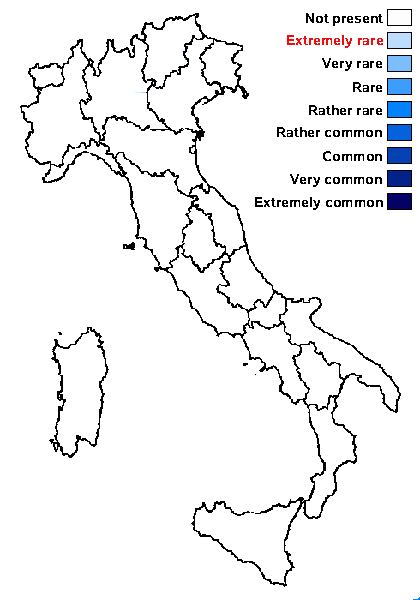
Predictive model
Growth form: Squamulose
Substrata: rocks, soil, terricolous mosses, and plant debris
Photobiont: green algae other than Trentepohlia
Reproductive strategy: mainly sexual

Predictive model
